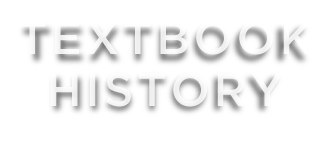December 5, 2023
Biology textbooks published just after the infamous “Scopes Monkey Trial” of 1925 are now entering the public domain, and the insights they provide regarding the presentation of evolution and the promotion of eugenics are fascinating. Much has been made of the edits publishers forced on their authors in response to pushback from Biblical literalists. But the “fire” surrounding Scopes and its aftermath tends to obscure a more relevant story – of the rise in promotion of a brutal eugenics in the 1920s.
Notable newly-available textbooks include the following:
Life and Evolution by Samual J. Holmes (1927). A thorough, though thoroughly progressionist (and Piltdown inclusive – see related article), presentation of evolution. Good for the times, but, unfortunately, presented primarily as a lead-in to eugenics. See pages 411-427 (note particularly the citations on page 427). If you’d like to know what a hard-core eugenicists was reading in the 20s, check out Holmes’ library.
New Civic Biology by George W. Hunter (1926). The author’s follow up to Civic Biology, the high school textbook at the center of the Scopes trial. Hunter, under publisher pressure, was forced to dial back a bit on his promotion of Darwin (Adam Shapiro’s Civic Biology and the Origin of the School Antievolution Movement offers an excellent documentary analysis). But that didn’t temper his enthusiasms. Eugenics, as in Holmes’s textbook, served as the volume’s “thrilling” climax. Hunter’s 1926 text counseled students to support the sex-segregated institutionalization and sterilization of “defectives,” choose their breeding partners relative to “eugenic fitness” and accept their social and class status as a “natural” consequence of their innate genetic inheritance, as did the majority of high school and college textbooks published during the Scope’s decade.
An Introduction to Biology by Alfred C. Kinsey (1926). From the man who would later become internationally famous for his sex studies, this text offered a strong alternative to the standard progressionist syllabus promoted by Holmes, Hunter and many others. Yes, Kinsey’s ideas regarding evolution were a bit off, quite Lamarckian in fact, and his counsel to high school students did include advising them to accept their genetic limits. However, his orientation as an entomologist led him to develop an innovative “unity of life” schema which de-centered humans and deemphasized progress. For a more in-depth discussion of this fascinating work, see If Kinsey’s Textbook Could Talk.
Other period textbooks now in the public domain include Modern Biology: Its Human Aspects by Harry Dwight Waggoner (1926) and Biology by William H. Atwood (1927), both proudly eugenic, and in contrast, The Laws of Living Things by Edward J. Menge, which offers a strong presentation of the topic of evolution while avoiding any suggestion of a eugenic purpose.
See Textbook History’s Biology Textbook Database for details on nearly every U.S. biology textbook published between 1907 and 1970.
